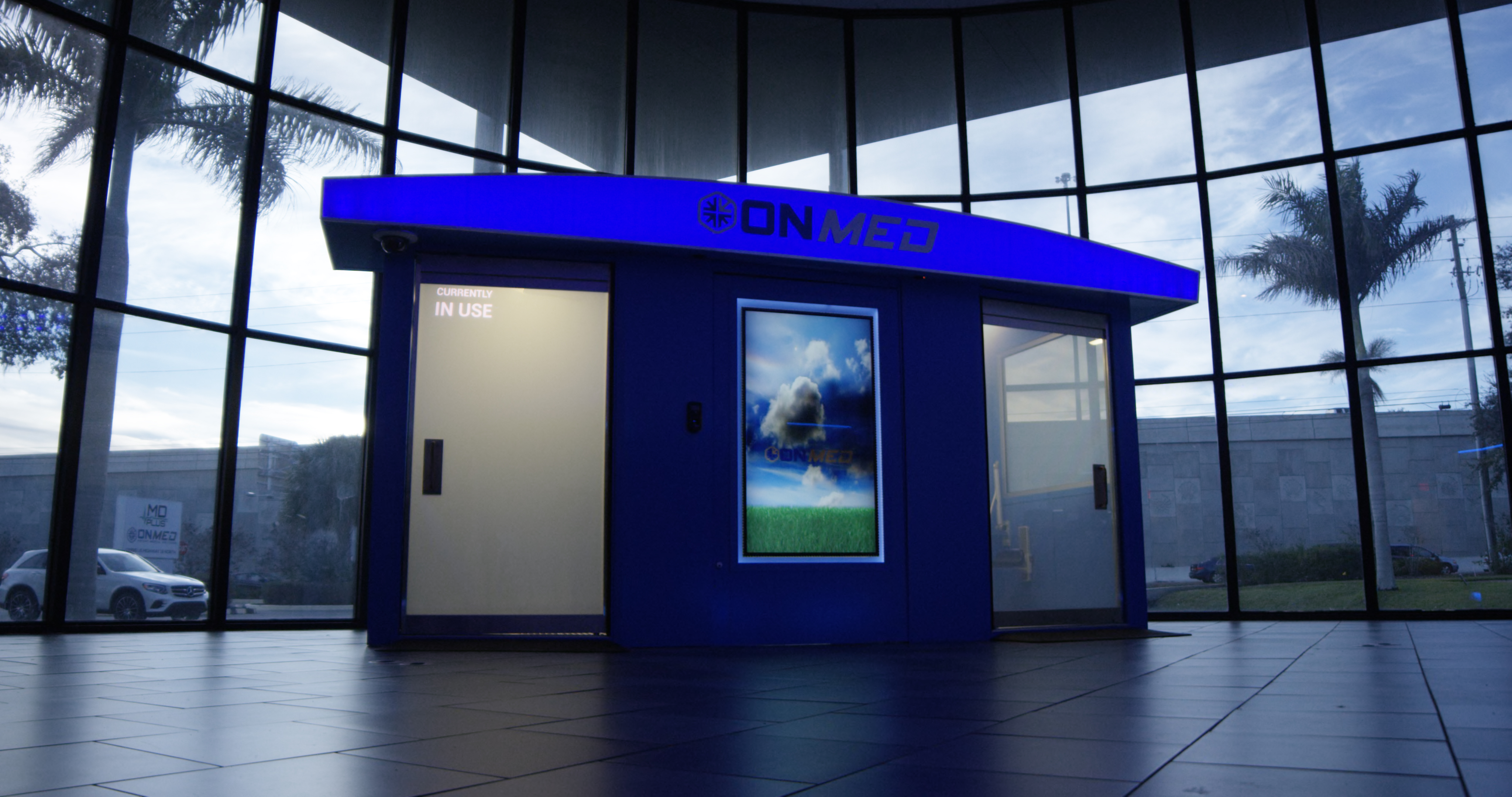Innovate
Telehealth firm combines virtual doctor visit with medicine on the spot

A telemedicine station that allows users to make a virtual visit to the doctor and get their prescriptions at the same time hits the market today.

Austin White
OnMed launched its OnMed Stations Tuesday morning, after six years in stealth mode.
The stations are interactive computer kiosks in a private enclosure with internet connectivity for medical consultations and for processing and dispensing pharmaceuticals.
Two units will go live in a rural hospital and a rural health center in Mississippi next month, said Austin White, president and CEO and a founding partner of the Clearwater company.
OnMed has letters of intent with six other clients. The stations also can be used in the workplace, at airports, colleges and hotels, among other locations.
“We think we have an opportunity to disrupt the healthcare system,” White said.
Access points
White and other OnMed founders have worked together previously at a sister telehealth company, MD Plus.Healthcare in the U.S. involves three key issues — access, cost and quality of care — White said.
“It doesn’t matter how much healthcare costs or who’s paying for it, or how good your physician is, if you can’t access it,” he said. “We look at telehealth as an access point.”
The idea for OnMed grew out of a personal experience by Leonard Solie, who is chairman of the board of the company. After waiting three days for a doctor’s visit, he had to pick up a prescription at the pharmacy, where he had to wait another 90 minutes.
“He was standing around for an hour and a half, waiting to get his medication, so he walked outside to pick up a movie from Redbox, and the idea hit him — Why would we not do this as a matter of course, having the doctor and the nurse and pharmacist all in the same consultation and dispense the medication?,” White said.
The national average to get a doctor’s appointment is 21 days, White said. People without insurance have to rely on walk-in clinics or emergency rooms, which is costly and exposes sick people to other illnesses.
That was a key factor in developing OnMed.
“We were insistent on the encounter being private, very clean and sanitized and with state of the art technology … When you are talking to the live medical assistant or the live nurse or doctor, it looks like you are standing there speaking to them,” White said.
Inside an OnMed Station
The OnMed Station has privacy glass that goes opaque when the station is in use, and 3D facial recognition for positive patient identification. The high-def camera allows a physician to look down a patient’s throat or examine skin lesions. There are non-intrusive medical devices to collect a patient’s vitals, and thermal imaging is used to provide body temperature and diagnose infection. The unit has anti-microbial surfaces and ultra-violet lighting is used to sanitize the consultation room.
“All of the diagnostic equipment we use is FDA-cleared or approved,” White said. “We want it clean, we want it secure and we also want the best diagnostic equipment in the marketplace in the OnMed station.”
The data is captured in an electronic medical record that can be shared with a patient’s primary care physician.
The 100 most commonly prescribed prescriptions are available, although the station won’t have any narcotics or scheduled drugs. The medications will vary depending on the location of the OnMed Station, White said.
The company will accept most major insurance, and Medicare and Medicaid will reimburse for a visit in some cases. OnMed plans to contract with physician groups and train them in telehealth.
“We’re not trying to take over the primary care role,” White said. “We’re trying to facilitate a need when the patient can’t get to their primary care physician or doesn’t have a primary care physician.”
OnMed currently has 14 employees, and expects to grow to more than 100 employees within about 18 months. The founders initially funded the company, followed by a small friends and family capital raise. In October, the company finalized a funding round with a large private investor, and has enough capital for the next year, White said.








Terri White
March 12, 2019at2:46 pm
Fantastic.
Changing Healthcare for mankind.
cavin cunningham
March 15, 2019at9:19 am
How will they enforce the no narcotics rule? They can still FAX or e-prescribe. Sounds like an easier way to hook people.